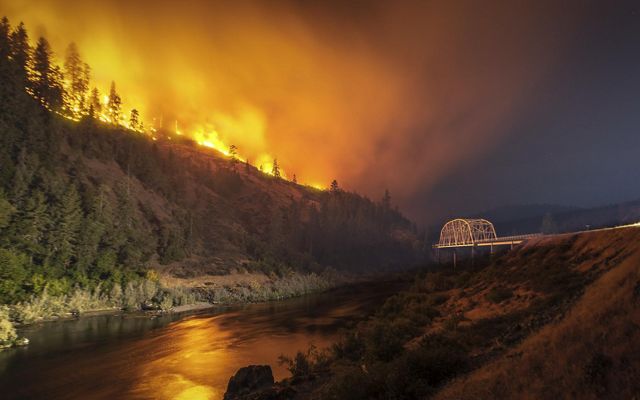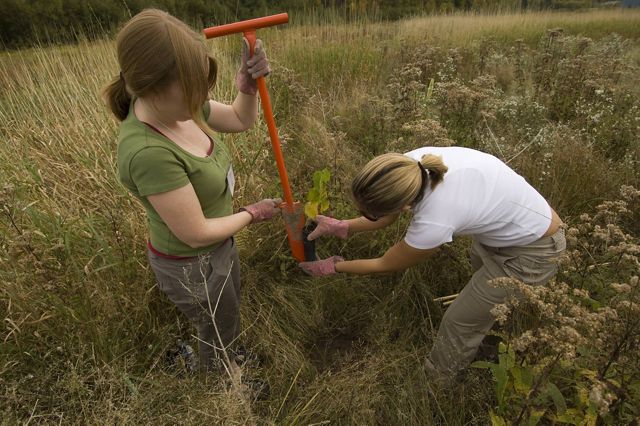The bipartisan REPLANT Act would significantly expand reforestation on federal lands, improving the health, management and sustainability of U.S. forests.
America’s forests are essential to our daily lives. They provide clean drinking water, house critical wildlife habitats, underpin many rural economies, sequester carbon and are a backbone of many local economies.
The nation’s forests:
- Store and filter more than half of the nation’s water supply.
- Provide jobs to more than 1 million forest product workers.
- Offer 1 million square miles for outdoor recreation.
- Generate $13.6 billion in recreation-based economic activity from national forests alone.
- Are habitat to thousands of forest-dependent wildlife and plant species.
Are a major carbon sink that sequesters 15 percent of all fossil fuel emissions in the United States.
However, our forests are facing new challenges, and climate change is exacerbating conditions such as megafires, pests and drought, all of which are decimating forests.
An area larger than Oregon is in need of restoration to maintain services for people, water and wildlife—and that is on national forest lands alone.
At the same time, these forests have the potential to deliver significant natural climate solutions if the capacity of these forest lands to sequester and store additional carbon is enhanced, with the added benefit of reducing emissions from wildfire.

Reforestation: A Powerful Return on Investment
Reforestation is one of the best strategies for leveraging natural and working lands to reduce greenhouse gas emissions both globally and in the United States.
Reforesting landscapes advances socio-economic benefits as well. Growing the reforestation pipeline was a highly effective tool for economic recovery in the New Deal era and it can be an opportunity to contribute to economic recovery again now.
There is tremendous potential for reforestation across the United States. Resources are now available to identify where trees can and need to be planted. A recent estimate suggests there are up to 127.5 million acres of land suitable for reforestation and tree planting in the United States alone.
These reforestation opportunities exist in every state and across private, public and tribal lands. A web tool, the Reforestation Hub, has been developed that allows people to explore the results for any county in the lower 48 states.

Policy Recommendations
Reforestation needs to be at the center of efforts to revitalize America’s forests. Specifically, Congress should focus on strategies that:
- Dramatically increase the pace and scale of ecologically appropriate, climate-informed reforestation of national forests.
- Enhance the capacity of the U.S. Forest Service (USFS) to eliminate the federal reforestation backlog.
- Strengthen forests’ resilience to climate change while enhancing carbon sequestration and storage.
- Optimize existing reforestation efforts to enhance ecosystem function, resilience and benefits such as safeguarding drinking water supplies.
While it is federal policy that our national forests should be reforested after severe wildfires and other catastrophic events, the USFS has been unable to meet this goal for decades.
To address this, Congress needs to advance legislation to grant the USFS the tools and resources it needs to address existing and future reforestation needs. It must also ensure reforestation efforts are climate-informed and ecologically appropriate. To do so, policymakers should:
- Increase mandatory funding for the reforestation of national forests by eliminating the cap on the Reforestation Trust Fund.
- Establish and fund a sister program to U.S. Department of the Interior’s Burned Area Rehabilitation program for the USFS for post-fire rehabilitation that is complementary to the Forest Service Burned Area Emergency Response program.
- Ensure existing reforestation and restoration programs align with best practices for climate adaptation.
- Increase the capacity of U.S. Department of Agriculture’s climate hubs and other research units for delivering climate-related science to forest professionals.

The REPLANT Act
The bipartisan Repairing Existing Public Land by Adding Necessary Trees Act (REPLANT) Act sets a goal for the USFS to address its reforestation backlog within 10 years.
To support this goal, the bill would eliminate the annual funding cap for the federal Reforestation Trust Fund, currently set at $30 million.
The USFS estimates that 1.3 million acres of national forest land need reforestation, including lands that experienced wildfires and other major disturbances. Despite this need, current funding only addresses about 15 percent of the reforestation backlog every year.
This legislation specifies reforestation priorities on the national forest system and explicitly includes reforestation as an eligible project under USFS partnership contracting authorities. The Nature Conservancy supports the REPLANT Act and encourages Congress to pass it quickly.


